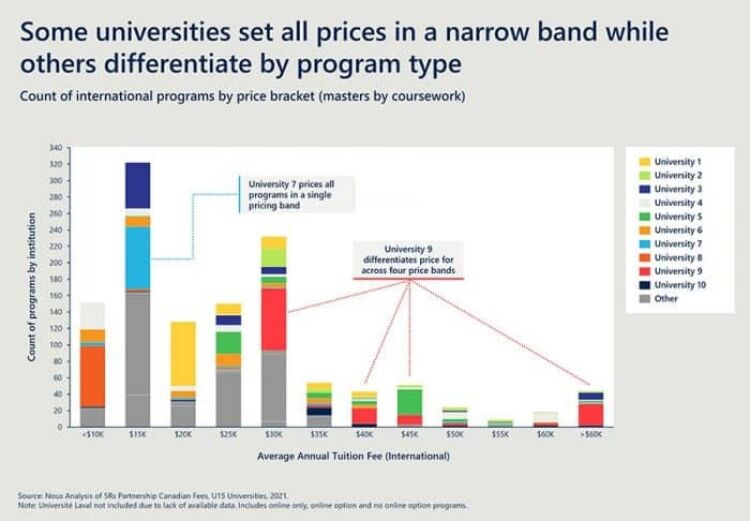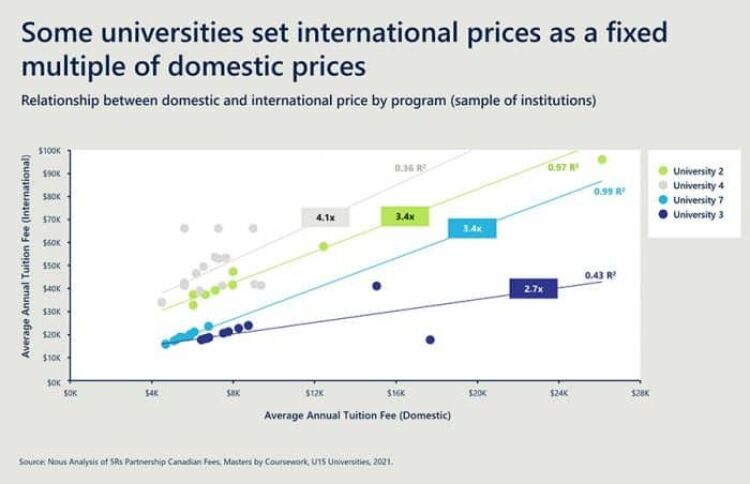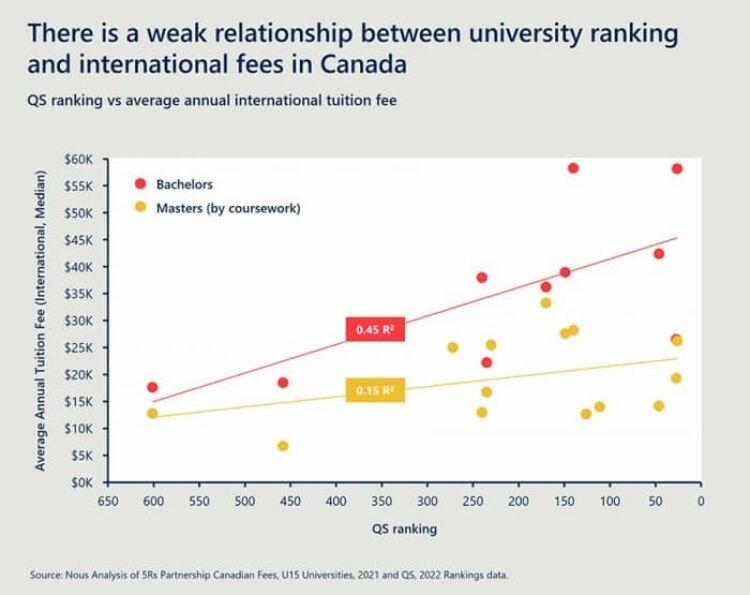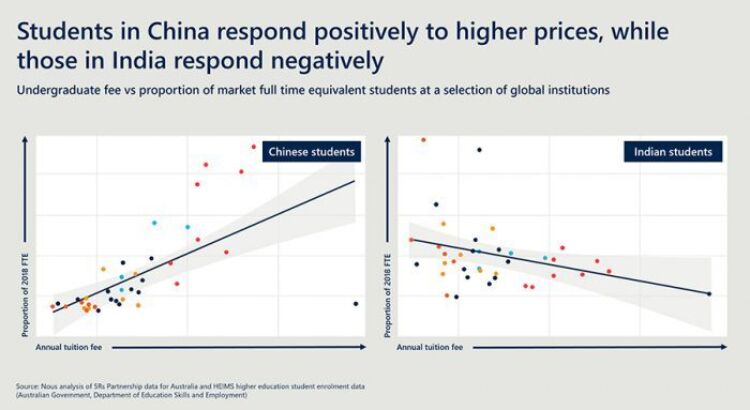insight
Nearly two years into the pandemic, the impact on higher education is still being felt around the world. Probably the biggest impact is on international student enrolments, with movement between countries still restricted.
But countries are not impacted equally – differences in government policy, vaccine rollout and economic performance have shifted the relative competitiveness of major study destinations and will drive the pace of recovery in student mobility.
The signs for Canada are positive. With borders starting to open, quarantine requirements easing and a well-publicized accelerated pathway to permanent residency for international students, Canada is on track to recover international student numbers. International education agents say Canada is now the most attractive study destination, ahead of the United States and United Kingdom.
With recovery in student mobility in competing markets such as Australia and New Zealand lagging, there is a window of opportunity for Canadian institutions to take market share.
Strategic pricing is a core part of international enrolment strategy
For prospective international students, price is an important input into their decision making. For post-secondary institutions, pricing choices influence two desirable outcomes: the volume of enrolments and program profitability, hindering or enhancing an institution’s ability to invest in its academic mission.
Our experience suggests that prices need to be aligned with the value of programs and this varies depending on the product and target market. Getting this right is difficult.
Reliable Canadian pricing data is essential
To develop a sophisticated pricing strategy, universities need high-quality tuition fee data to understand price positions, benchmark against competitors and understand price-sensitivity in different markets. To date, high quality data on tuition fees across Canadian institutions has been variable.
Global firm 5Rs Partnership recently announced it will release its first Canadian Higher Education Canadian Fees Monitor, offering a comprehensive and comparative database of tuition fees across U15 universities with breakdowns by institution and program type, making it much easier for institutions to embark on a pricing review or strategy project.
Nous has significant experience working with 5Rs Partnership data. For the past decade we have worked with universities in the UK and Australia to implement strategic pricing, informed by the 5Rs Partnership Higher Education Fee Monitor. Having received early access to the Canadian data, we share three lessons for institutions.
Universities should heed three key lessons
Drawing on 5Rs Partnership Higher Education Canadian Fees Monitor – recently released for 2021/22 – we highlight some key insights for Canadian post-secondary institutions when designing pricing approaches.
1. Pricing should align with product strategy
Pricing influences the size and shape of the student cohort and the financial return generated by a program. An effective pricing strategy builds from your product strategy, which establishes the aspiration for the product and the role it plays in the portfolio. The pricing strategy needs to ensure prices are targeted to the market segment you want to attract.
Analysis of U15 data indicates that some institutions adopt blanket pricing approaches across all programs. Some institutions concentrate prices for all programs in a limited pricing range (University 7, below) and others differentiate across several pricing bands (University 9, below).

Meanwhile, some institutions tie international tuition fees to domestic fees with standard multipliers, with no differentiation in the factor applied across program types.

While blanket approaches can support development of an initial price estimate for a program, differences in ranking position and pricing power across program types should encourage institutions to offer greater differentiation in price.
These approaches do not consider product strategy and institutions’ aspiration for the product. Before making pricing decisions, institutions should clearly understand their product strategy, including target market and value proposition, and adopt a pricing approach that will realise that aspiration.
2. Pricing should signal your position in the market
A university’s ranking is a prime signal to students of education quality and is a proxy for future employment outcomes. Nous’ analysis of pricing data across Australia, the UK and Canada reveals that willingness to pay is generally correlated with a university’s ranking.
Incongruity between price and ranking can result in universities leaving money on the table or pricing out students that do not perceive the program offers value for money. With price seen as a proxy for quality, incongruity may also damage student perceptions of attractiveness.
In Australia, the relationship between average international tuition price and rank is very strong (0.7 to 0.9 R2, according to StudyMove [2]), suggesting that universities generally align price with ranking. But among the U15, the relationship is weaker, particularly at graduate level: 0.45 R2 for bachelor programs and 0.15 R2 for postgraduate programs.

This indicates misalignment between university ranking position and price in Canada, particularly at the postgraduate level. The average international fee for postgraduate programs is substantially below the line of best fit for several institutions, which suggests that for some Canadian universities, ranking performance would support higher prices.
We recommend that Canadian universities review current prices to assess whether price is misaligned with ranking position (both at an institution and discipline level) and adopt a pricing approach that considers ranking position and signals its position in the market.
3. Pricing tactics should be used strategically
University programs are often considered Veblen goods: high prices signal quality or status and generate increased demand. While this is true for some programs in some markets, it is not consistently the case.
Our review of pricing and enrolment data found that price sensitivity among students varies by country. The challenge for a sophisticated pricing strategy is to accommodate non-price-sensitive markets (e.g. China) while also accommodating price-sensitive markets (India).

Market leaders use pricing tactics such as scholarships and bursaries to signal a net price (distinguished from a sticker price) that better aligns to its perceived value in the market. This allows them to attract students from a range of markets. For example, universities in Australia offer discipline- and country-specific scholarships that influence their ability to achieve recruitment and diversity aspirations for programs.
Now is the perfect time to review your strategy
By adopting more strategic approaches to pricing, Canadian universities can recover lost market share and revenue.
Of course, pricing alone is not the answer. Investment in reviewing pricing methods should be supported by investments in marketing and partnerships, together with strategies involving program offering, student experience and experiential learning to ensure students get exceptional value from their studies.
As the world continues to open up after the pandemic, Canada’s window of opportunity will close. Savvy universities are seizing the moment to strengthen their international student enrolment strategies.
Informed by quality data such as 5Rs Partnership and industry-leading insights from Nous Group, universities can ensure they are best positioned for international student growth.
Get in touch to discuss how Nous can support your university’s pricing strategy.
To access the first Canadian Universities (U15) Fees Monitor contact Dr Stephen Holmes at 5Rs Partnership.
Connect with Francesca Catalano, Daniel Cragg and Tim Kennedy on LinkedIn.
A version of this article was first published in The PIE News.




